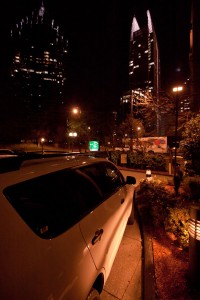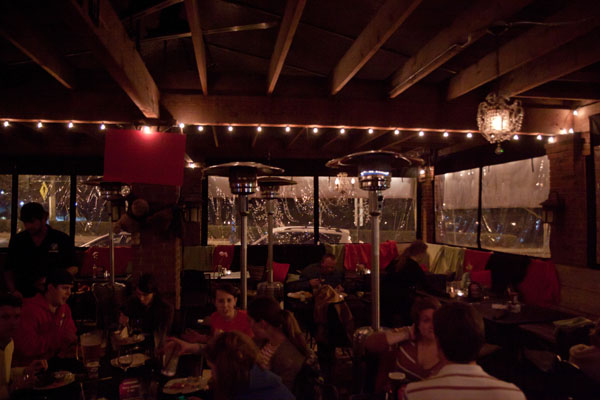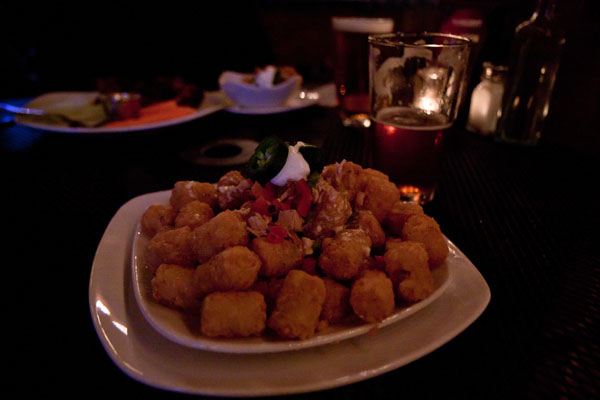(The complete set of photos can be found in my SmugMug gallery.)
After the disastrous 2nd annual Mammoth Lakes ski trip, we embarked on our third one this year over MLK weekend. The problem was that there wasn’t any snow in Mammoth Lakes. Well, no problem, some of us said; we’ll just go hiking. And so we hiked through terrain for five days that’s usually completely impassable this time of year save on cross-country skis or snowshoes or crampons.
Tioga Pass was open this time of year for the first time since the 1930s, which cut an hour or two from our drive from the Bay Area to Mammoth. Tioga Lake was frozen over though, so we had a bit of fun (and a cold picnic) on the open ice.

The buckling of the ice as the lake heats up and pushes new ice outwards is incredible:

On our first day of exploration, we headed over to several volcanic craters that were formed in the creation of the Sierras. This required driving the Outback on a forest road, which, despite the serious lack of snow, was still covered in a thin layer of packed snow and ice. Taking advantage of this rare opportunity of both low ground-growth, and low snow, we walked around the crater.

We saw this tree that was quite a fine specimen of its species:

Our next spot was hiking around Obsidian Dome, an enormous deposit of volcanic rock, including, unsurprisingly, quite a bit of black, shiny obsidian. The approach was another sketchy drive on a forest road, followed up a very steep (and very sharp) scramble up volcanic boulders:

There wasn’t exactly a top–the terrain was highly variable–but once the steep part ended, we felt like we were on a foreign planet:

Even in this rather inhospitable environment, the moss and lichen still thrive:

Many of the rocks look like they had been carved and patterned by rainwater, then readjusted by erosive forces:

Quite incredibly, there were even a few rare firs popping out of the ground. Other hikers have taken the liberty of protecting these young trees with a bit of a human touch:

After about two hours of walking aimlessly, trying to follow one of the winding trails, we were mystified by where the obsidian part of Obsidian Dome was. All we were seeing was this much lighter rock–rhyolite?–and occasionally, there was some granite. Though, after rounding a turn, we saw in front of us huge formations of much darker rock:

Indeed, we had found column after column of shiny, glassy, black obsidian:

An hour later, as the sun was setting, and temperatures were quickly plummeting below freezing again, we found the winding trail down to the forest.

In part II, Mono Lake tufas, and Bristlecone pines.











